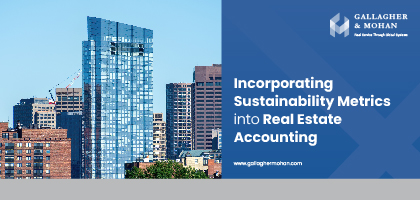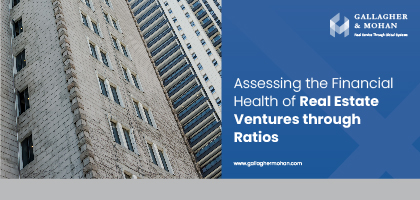04 March 2024
How to Understand Cap Rates and NOI in Commercial Real Estate Investing
Commercial Real Estate (CRE) investing stands as a robust avenue for those seeking to fortify their estate planning goals, offering the potential for passive income and long-term wealth accumulation. In this comprehensive guide, we will delve into the intricacies of two crucial metrics in the realm of CRE investing—Capitalization Rates (Cap Rates) and Net Operating Income (NOI). Understanding these metrics is essential for assessing the profitability and risk associated with different properties, aiding investors in making informed decisions aligned with their financial objectives.
Decoding Cap Rates
Cap rates act as a barometer for gauging the annual income an investor can expect for each dollar invested in a property. Calculated by dividing the property's Net Operating Income (NOI) by its value, cap rates are instrumental in assessing the risk and potential return of an investment. It's crucial to recognize that cap rates are relative and should be interpreted in the context of comparable property types.
Risk and Return Profiles Across Property Types
Diverse property types exhibit distinct risk and return profiles. For instance, office buildings and multifamily properties historically boast lower cap rates due to their perceived stability. Conversely, retail and industrial properties may have higher cap rates, reflecting their sensitivity to economic conditions. The article emphasizes the necessity of considering these nuances when evaluating investments, highlighting that the property type plays a pivotal role in determining cap rate trends.
Unveiling the Significance of NOI
Net Operating Income (NOI) stands as a critical metric in assessing the profitability of an income-producing property. Calculated by subtracting all operating expenses from total revenue, NOI provides investors with insights into the potential return on their investment. It is stressed that meticulous inclusion of all operating expenses, such as maintenance, property taxes, insurance, and utilities, is imperative for accurate NOI calculation.
Also Read: Real Estate Investing: Assessing Risks and Maximizing Returns
NOI, devoid of financing costs and taxes, offers a clear snapshot of a property's operational performance. By focusing on the revenue generated after expenses, investors gain a realistic understanding of the income potential. The article underlines the importance of NOI in evaluating the operational efficiency of a property, emphasizing its role in the decision-making process.
Interplay Between Cap Rates and NOI
The relationship between cap rates and NOI is explored, emphasizing their inverse correlation. As cap rates decrease, the property's value increases, and vice versa. This inverse relationship is attributed to lower cap rates indicating higher demand, while a higher NOI signifies increased income after accounting for expenses. Real-world scenarios, such as changes in demand for commercial properties in specific regions, are presented to illustrate how fluctuations in cap rates and NOI can impact property values.
The article underscores the significance of considering both cap rates and NOI together when assessing a property's profitability. A low cap rate does not guarantee a sound investment if the NOI is also low, and vice versa. Real-world examples are employed to illustrate scenarios where investors must weigh both metrics to make informed decisions aligned with their financial goals.
Utilizing Cap Rates and NOI in Investment Analysis
While cap rates and NOI are pivotal, the article emphasizes the need for a comprehensive investment evaluation process. Additional metrics, such as Cash-on-Cash Returns (CCR), Internal Rate of Return (IRR), and Equity Multiple (EM), are introduced as complementary tools. Each metric is explained in detail, offering investors a clearer picture of the risks and overall profitability potential before committing funds.
Cash-on-Cash Returns (CCR), representing the annual return on actual cash invested, Internal Rate of Return (IRR), gauging the overall rate of return over time, and Equity Multiple (EM), measuring returns relative to the initial investment, are discussed. The article emphasizes that no single metric provides a complete picture, and a holistic approach is essential for making well-informed investment decisions.
Conclusion
In conclusion, the article reiterates the indispensable role of cap rates and NOI in evaluating commercial real estate investments. These metrics serve as crucial indicators of risk and return, allowing investors to assess different properties based on their expected returns. By considering these metrics alongside other essential indicators and engaging with third-party fund sponsors, investors can make well-informed decisions that align with their estate planning goals.
The journey through understanding cap rates and NOI in commercial real estate investing reveals the nuanced world of wealth-building through property investments. Armed with the knowledge of these metrics and their interplay, investors can navigate the dynamic landscape of commercial real estate, making strategic decisions that pave the way for long-term financial success.



